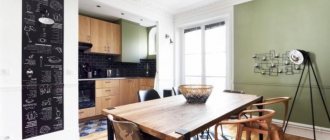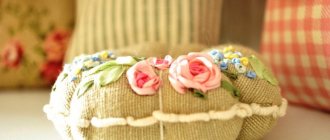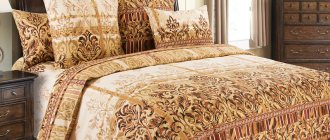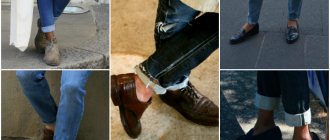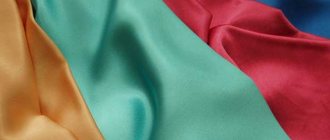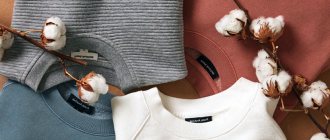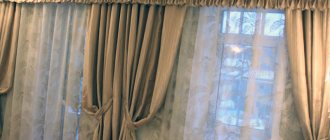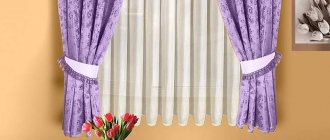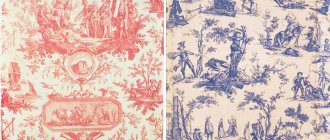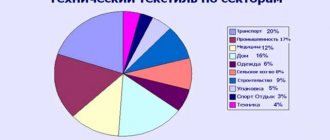“Houndstooth”: retro interior with the scent of Chanel No. 5
Through the efforts of the inimitable Chanel, the houndstooth print is considered an example of sophistication and good taste, but it was not invented by Mademoiselle Coco. A broken cell, smeared diagonally, comes from Scotland, or more precisely from the historical region of the Border, adjacent to the English border.
Practical Scots do not do anything for nothing - the colors of kilts and plaids carried information about the clan affiliation and status of the owner, despite the fact that a meeting with representatives of a hostile family in the mountains could end in failure. Not wanting to become victims of infighting, border shepherds invented the black and white border tartan pattern to signify neutrality.
However, even in the Scottish mountains, the “houndstooth” did not appear out of the blue - individual elements of the pattern cover archaeological artifacts found during excavations of ancient Roman colonial cities, church vestments of the 12th century and individual elements of Venetian architecture.
The first wave of interest in houndstooth arose with the development of the tweed industry in the Victorian era, when technologies for the industrial production of patterned wool from colored yarn were discovered. The pattern is formed by four dark and four light threads in both warps with a twill weave. An alternative is to use two threads under the warp and two above the warp, raising the overlap by one thread each time. Nowadays, “houndstooth” can be printed on any fabric.
The traditional design of the houndstooth is black and white, but in the mid-twentieth century new options began to appear - white-gray, black-yellow, red-blue, white-blue and white-red. Nowadays, the number of combinations cannot be counted at all. There is a suitable combination for every taste. The scale of the design also varies over a wide range: from the “small step” to the large caliber of the 60s and 80s.
The main use of houndstooth in textile design is in upholstery fabrics and accent pieces for modern and vintage interiors. A small pattern is the prerogative of the country style: from a distance the pattern is perceived as a checkered pattern, but up close it does a good job of masking scuffs and stains. A large “houndstooth” in the spirit of Lady Gaga brings expression and dynamics to the cold aesthetics of minimalism and enlivens the monochrome interior. A few sofa cushions, decorative bedspreads or a blanket refresh a boring environment, and a rug or rug in a houndstooth pattern creates an impressive backdrop for strict, laconic furniture and visually expands the room.
Houndstooth curtains are rare: contrasting prints against the light tire the eyesight, although some designers argue that such a solution visually raises the ceiling in a cramped, darkened room and helps avoid excessive restraint in “masculine” interiors.
A stunning example of the unconventional use of houndstooth print is provided by Driade, which has released a series of Cape West garden furniture. The recognizable pattern is formed not by threads, but by plastic strips intertwined in a two-by-two manner.
Houndstooth complements plain materials well; combinations with flat checks, stripes, zigzags and small floral prints are also allowed. It is not recommended to use more than three accents in one room. The exception is the funk style, in which everything is allowed except monotony and boredom!
Houndstooth upholstery
Houndstooth curtains
Fabric colors - groups:
Modern types of patterns and prints for fabrics can be divided into two groups:
- pictorial ornaments , which are based on objects of the real world - plants, animals (zoomorphic motifs), landscapes, images of humans (anthropomorphic motif), various objects;
- non-figurative ornaments - geometric elements, abstract and psychedelic images, which initially could have a real prototype, but have changed beyond recognition.
More ancient are the geometric types of patterns on fabrics: they originated from people’s cosmogonic ideas about the world and from technological methods of making objects. These are such well-known ornamental motifs as stripes, zigzags, checks, rhombuses, polka dots, triangles, etc.
Paisley, or “Turkish cucumber”: the soul of the East
The oriental paisley pattern is one of the oldest designs in the world, believed to have been invented in Persia during the Sassanid era. The basis of the pattern is made up of isolated teardrop-shaped patterns, complemented by complex ornate painting, combining floral and geometric motifs. The directional arrangement of the design elements creates the effect of pattern movement.
The rich color scheme is in harmony with the deep symbolism of the ornament. In Zoroastrianism, the tapered paisley pattern is associated with the slender silhouette of the sacred cypress tree and the flames that created the world. Typically, in India the pattern is called “buta”, which means “fire” in Sanskrit.
Antique samples of oriental fabrics with hand-printed patterns make a strong impression with their fine detailing of the cucumber filling. In Persia, good wishes and poems were written into the elements of the ornament using calligraphic script; in India, paintings depicting mythological scenes were embedded.
Back in the Middle Ages, the pattern became widespread in Asia and North Africa, and in the 17th century, the East India Company brought cashmere shawls with hand-woven cucumber patterns to Great Britain from India, which were highly valued by the English nobility. Later, in the Scottish town of Paisley, a factory was opened that specialized in the production of linen from wool and silk with patterns.
The fashion for paisley was revived only in the middle of the twentieth century thanks to the cult group The Beatles and the hippie movement. After their tour of India, the musicians often performed in colorful suits with paisley prints, and John Lennon's Rolls-Royce was painted with paisley in bright psychedelic shades. Now Stella McCartney successfully continues the tradition: there is a place for paisley in all collections. David Bowie actively used paisley to create the image of the Martian Ziggy Stardust. Liv Tyler, Fergie and Beyoncé also love to show off in colorful costumes with exotic patterns.
The Italian fashion house Etro has made paisley its calling card, offering the pampered consumer stylish clothes, fashion accessories and high-quality interior fabrics with a “paisley” pattern. Thanks to the use of special processing technologies, Etro upholstery materials are as strong as leather, but at the same time remain light and flexible.
The expressive potential of paisley is widely in demand in interior design, and not only in boho-chic and ethnic interiors. “Turkish cucumbers” decorate furniture covers, bed linen, curtains, bedspreads and carpets. The Cole&Son company produces wallpaper with paisley prints. An endless variety of colors and shapes allows you to choose the right option for any style. At the same time, the pattern, despite its saturation, is tolerant of other prints, and the rich palette of patterns allows us to consider paisley as a link between different colors in interiors with complex colors and ethnic motifs.
On large areas, discreet prints with enlarged elements, designed in neutral natural tones, look advantageous. Also popular is the combination of a pastel background and white outlines of the design or brighter monochromatic patterns on a light background. Traditional combinations of rich warm tones in the East make the design heavier, so in small rooms their use is limited to one or two accessories. Intricate patterns with ornate filling and deep complex shades are the golden fund of the English colonial style, while the pop art style prefers bright, simplified “paisley” patterns on a contrasting background.
Dark tones enhance the intimate feel of a spacious, classic living room, while fresh pastel shades maintain a calm, peaceful atmosphere in the bedroom. Even in a brutal loft there is room for an armchair or small sofa with unobtrusive “cucumber” motifs in the upholstery - paisley enriches the cold industrial aesthetic with notes of comfort and intellectual sophistication, giving the room a lived-in look.
Sleeping set with cucumber print
Flowers and paisley: combined print
How to determine that this is a region
To find out that it is the region in front of us, and not another type of artificial silk, either an acutely sensitive sense of touch or laboratory tests will help.
However, after conducting a combustion test, you can find out that this material definitely belongs to the silk group: as the fabric burns, you can see white smoke and smell the burnt paper. A whole army of world-famous fashion designers and fashion designers are working with the fabric we have studied today. Branded items are made from this material, so the quality of a product bearing the “rayon” brand is obvious.
Ikat: old motifs in a new way
The exquisite “ikat” pattern also comes from the East, but ethnic associations are not so pronounced, so the print is considered a universal addition to any interior. Blurry diamonds, polygons and abstract spots form simple and complex floral and geometric patterns that convey a wide range of moods.
The traditional technique for producing patterned silk fabric is based on dyeing the weft threads before they hit the loom. Unwinding the silkworm cocoons, the master immediately pulled the threads onto a wooden frame and tightly wrapped each strand with a wide braid. Then the frame was lowered into the dye vat and kept in the dye for the required amount of time.
In Central Asia, this method was used to produce luxurious khan-atlas fabric, which was famous for its bright pure colors and subtle tints of shades, reminiscent of the play of a masterfully cut gem. The first centers of production of khan-atlas were in Bukhara; later the craft moved to Samarkand and the Fergana Valley. However, such paintings cannot be called an exclusively Uzbek phenomenon: samples of fabrics dyed using similar technology were discovered during excavations of ancient settlements in India, Indonesia, the Philippines, pre-Columbian America and the island of Bali. By the way, the word “ikat” itself is of Indonesian origin and is translated as “tying”, “tightening”.
The classic colors of ikat fabric are red, blue and yellow combined with light unpainted areas. In the old days, no other dyes were known, and all other colors were obtained by mixing pigments. For example, green ikat was made in two stages: the threads were first dyed yellow, and then individual sections were tied and the exposed fragments were treated with blue dye.
Nowadays, ikat-based patterns are modeled on a computer and applied to the canvas using digital printing. The original khan-atlas, made by hand, is considered a luxury item and can cost a fortune.
Despite the rich, temperamental colors, “ikat” is not too intrusive and will be appropriate in any modern interior and in a room for any purpose. It is very convenient to use this pattern in the design of the kitchen and nursery: the absence of clear boundaries of the pattern hides dirt. Such textiles are used in furniture upholstery and window decoration; Ideal for sewing bed linen and charming as a color accent.
Ikat-based prints fit well into eclectic interiors, do not conflict with other patterns and do not impose special requirements on the layout and style of the room. With the help of a roll call of patterns, designers combine into one whole elements of different styles in one room and create complex combinations of shades and textures. The powerful decorative potential of “ikat” was appreciated by modern design trendsetters – Grace Bonney and Martyn Lawrence Bullard.
“Ikat” does not tolerate loneliness: the interior should contain two or three elements with the same pattern. Typically, several accessories are added to one large object or decorative items are evenly distributed throughout the room. For example, curtain fabrics and a rug are selected for a sleeping set, and wallpaper and a matching ottoman are selected for the sofa. If the room is decorated in light colors, it is permissible to use several accents with “ikat” in different colors, choosing shades that are in harmony with each other.
An alternative move is to include monochromatic pieces of furniture in the same colors as in the pattern. For example, a white and blue chair will be accompanied by white floors and a blue sofa. In austere interiors with a predominance of dark tones, “ikat” muted tones look chic.
Welcoming indigo terrace: ikat blue and all shades of the sky
Multicolor “ikat” in bathroom design
Classic ornament. Damascus
Damascus is a complex classical ornament , formed from interweaving of the likeness of a large flower and a variety of leaves, as well as other plant elements. A distinctive feature is the vertical repetition of this pattern - in parallel or in a checkerboard pattern. To create it, only 2 colors are used - the background and the color of the picture . They can be close in scale or contrasting.
Source: beoot.com
Source: smartinteriors.ru
The roots of the ornament go to the East, to the capital of Syria - the city of Damascus. Damascus was originally considered a fabric pattern. Now this print is a classic and is used in almost all interior items. It finds its place everywhere, be it wallpaper or curtains, furniture upholstery or floor tiles.
Source: rich-salon.ru / theitaliagal.com
It can be used in kitchens and bedrooms, living rooms and children's rooms, that is, in almost any room in your apartment or house. Since ancient times, Damascus has been recognized as a luxury item . It is most often an accent in the interior, a point of attraction. That is why you should not overdo it with it. If it is wallpaper, then it is enough to decorate one wall to emphasize the classic style and taste of the apartment owner. The damask pattern is widely used in modern styles such as art deco and fusion.
Source: housesdesign.ru
Multifaceted cage: tradition and modernity
The checkered pattern is created by intersecting repeating stripes at right angles. The pattern is obtained by using dyed threads in a twill weave. The simplicity and flexibility of plaid fabric technology allows for an endless variety of patterns, providing designers with a steady stream of creative ideas.
Check is usually associated with Scotland, but the Highlanders were far from the first people to use tartan prints produced by twill weaving. Archaeologists have discovered remains of checkered fabrics while excavating the tombs of Egyptian pharaohs. In ancient Rome, patricians wore checkered togas, and in medieval Japan, kimonos with patterns on checkered bases were widespread.
Provided the shades are selected correctly, the check gets along with almost all prints, except for complex ornamental patterns. Combine rich decors with neutral ones and introduce as much white as possible into the interior, which links any colors and prints into a single look. It’s easy to combine two different checkered fabrics by placing monochromatic accessories in the room, the colors of which repeat the leading shades of both checkered fabrics. When combining a check with a stripe, a simple floral pattern or polka dots, make sure that bright dynamic prints are not applied to the main surfaces, that is, walls, floors, ceilings and door facades.
“Vichy” and “guineme”: a cheerful check for a rustic interior
A medium-sized two-color Vichy check is an inseparable companion of the romantic Provence style. The perpendicular lines forming the pattern are equal in width, and the color layout is dominated by light, pure colors, one of which is usually white. Red-white and blue-white colors are especially popular: the first softens the cold range of shades, the second sets off the “warm” interior. White and brown checkered patterns are often found in kitchen designs. The Vichy print is also suitable for country style: the naive simplicity and informal nature of the decor emphasize the intimacy of the atmosphere.
The “Vichy” check is similar in spirit to the “guineme” – a multi-colored check with a characteristic distribution of tones. At the intersection of lines, the main tone becomes more saturated, while the color of the lines is shaded. The background is usually also white.
“Vichy” and “guineme” are equally suitable for decorating large and small areas. The tone of the room is set by checkered curtains, which can be decorated with frills, ruffles and homemade lace. In the kitchen, the functions of a color spot fall on kitchen textiles - a checkered tablecloth, complemented by plain napkins, or a combination of a plain tablecloth with checkered napkins.
Eclecticism with a boho and ethnic touch often turns to the Indian madras print. Bright cotton fabrics are printed with an asymmetrical pattern in large multi-color checks. A similar effect can be achieved using the patchwork technique. Madras print curtains and bedspreads create a cheerful mood and freshen up the ambiance well if you limit their use to the summer season. The constant presence of expressive decors in a living space quickly becomes boring.
Tartan in an English interior
Vichy cage in the studio interior
Gymnasium cage in a boy's room
Stripe: a timeless print
In the public consciousness, the stripe is inextricably linked with the sea and the navy, although its history began on land, namely in Ancient Egypt: the pharaohs wore scarves with blue and gold stripes as a sign of power and royal dignity. In the Middle Ages, a striped dress served as a marker of social marginality. During the Renaissance, prejudices began to slowly recede, but only at the end of the 18th century did the striped pattern take its rightful place in the wardrobe and in the interior, becoming one of the most popular textile prints on the planet.
The Slavic peoples had their own version of the strip called “motley”. When yarn supplies came to an end, thrifty housewives collected the remnants of threads and wove multi-colored fabric - there was no good to be wasted!
In textile design, two types of striped decors are most often found: a two-color nautical stripe with a line width of 20–21 mm and a multicolor rayet stripe with lines of different widths. There are also an endless variety of pinstripe patterns, ranging from the pinhead on Wall Street clerks' suits to the 7-8mm tent stripe.
Striped curtains are a universal solution for any style, with the exception of the canonical Baroque and Art Deco, which categorically do not recognize a straight line. By choosing curtains and tulle fabrics with suitable stripes, you can correct many of the shortcomings of the room. Thanks to glossy publications, even schoolchildren know that horizontal lines on curtains visually expand the room, and vertical lines raise the ceiling. Without arguing with the truisms, let us make a couple of clarifications. Firstly, a vertical strip, which stretches the walls due to the illusion of narrowing the space, is not suitable for narrow and cramped rooms. Secondly, horizontal stripes partially conceal the height of the ceilings, therefore, for the purpose of visual expansion, it is preferable to select prints of light and pastel colors, in which the effect of lowering the ceilings is not so pronounced.
In the design of accent walls in classic interiors, a wide order stripe, or “marquise,” is often found, which is applied to both wallpaper and stretched fabrics. A thin strip over large areas should be used very carefully to avoid the unpleasant feeling of ripples in the eyes. If you can’t imagine your room without your favorite “pinhead,” choose calm colors in the same color scheme as the wall decoration. For the same reason, it is better not to overuse replicated blue-white and red-white prints. The combination of light curtains with unobtrusive stripes and matching wallpaper will not seem boring to you if you add accessories and decorative furniture with bright stripes to the interior.
For upholstery of sofas and armchairs, neutral tones of stripes without sharp contrasts are preferable, which can be diluted with pillows and blankets with complex patterns and colors. The stripe easily combines with all prints - from a simple flat check to elaborate oriental patterns, provided that the colors of the stripes are present in the palette of the complex pattern.
Roman blinds with serpentine stripes
Marine style terrace design
V
Corduroy, ribbed velvet: collective name for velvet fabrics with longitudinal ribs of different widths, from very narrow to wide.
Velor: a collective name for soft fabrics with thick short pile.
Vichy: A two-tone fabric with a contrasting rectangular check, made from cotton or mixed fibres.
How to correctly call checkered prints
Pile Stretch: A fine jersey fabric with a velvet-like, fuzzy surface.
Voile: A sheer plain-weave fabric, usually cotton.
Knitted fabric: material that imitates hand knitting.
Viscose is the most natural among chemical fibers
